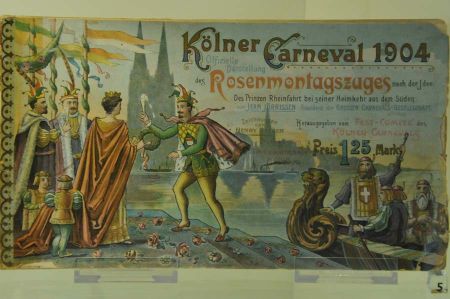Lets go to German Fastnacht Museum in Kitzingen
- Written by Portal Editor
We also wanted to use the visit to the exhibition of the best press photos in Kitzingen to visit the Carnival Museum, which only opened in November 2013 in the new building in the Main Franconian city, after all it is the official museum of the German Carnival Association.
Around 4,000 carnival clubs, carnival guilds, carnival societies and fools' guilds are organized in the umbrella organization of the German Carnival.
Fastnacht in the mirror of cultural-historical development
The Falterturm was built between 1469 and 1496 as a fortification and watchtower of the outer Kitzinger city wall and is still the best preserved part of this fortification. The crooked tip of the tower, which is protected as a monument, is striking and is therefore also known as the crooked tower. Today the owner is the city of Kitzingen. The height of the tower is 52 meters, divided into seven floors, which means that the Falterturm contributes as a striking building to the silhouette of the city.
Masks, props, medals and orders, as well as medieval customs, literature and documents related to carnival are still the focal points of the Fastnacht Museum collection. However, all the artefacts are presented on a large scale and thus enable a "journey" through the history of carnival from the Middle Ages to the present day, including politically difficult times. On our journey through the world of fools, we encountered medieval fools, early mask figures, moustached runners, figures from the Commedia dellÀrte and participants in baroque costume festivals and the bourgeois carnival.
Historical development of the carnival
Pre-Christian rites may have been preserved in some masks and customs, for example from the Celtic environment. One could assume this in the symbolic struggle between light and darkness, good and evil, spring and winter, which can often be found in the Alpine region. These motifs can be found, for example, at the Egetman parade in Tramin or at the Mullerlauf in Thaur.
The collection of the German Fastnachtsmuseum in Kitzingen is considered to be significant and, as a scientifically sound documentation of the carnival, is probably unique in the German-speaking world, after all it is considered the European documentation center for carnival customs. It also contains the oldest surviving fool's cap in Germany, which dates back to 1840 and was found in Speyer.
11 theses and what does the Bible say about them?
- So if you want to know what "Helau" and "Alaaf" mean;
- What the Bütt is all about;
- Why everything in the carnival revolves around the eleven;
Then you are at the right address in the German Fastnacht Museum Kitzingen.
Please read as well:
A winery and country inn near Abtswind
Marktbreit - Roman hiking trail "Blue Butterfly" on Main
-
-
-
-
-
-
-
-
-
https://www.alaturka.info/en/germany/bavaria/6164-lets-go-to-german-fastnacht-museum-in-kitzingen/amp#sigProIdb5846e6cb7
